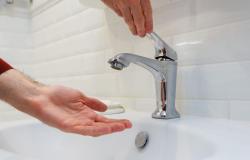
The English chemist William Joseph Dibdin had lived in Cremona during the 19th century, this fact, partially true, had changed the course of his life. Dibdin’s Cremona was the family home, an estate in Sutton called Cremona, owned by Agostino Aglio, the Cremona painter who had moved across the Channel decades earlier. In the Cremona of Sutton Dibdin had met and then married Agostino’s niece, Marian, who accompanied him throughout his life, a life that had an incredible turning point. Dibdin, with his studies, had reached an awareness; the waters of the Thames were polluted and public health, especially that linked to the proliferation of cholera, was greatly affected and would suffer in the future. William studied and perfected a wastewater filtering system that would purify the wastewater before entering the Thames, once developed he presented himself before the London City Council with his idea and his motivations. From that session in about 1890 Dibdin emerged with the position of Sanitary Officer of London’s waters and his patent to be developed for filtering water.
About a century later, an American diplomat, Douglas Gordon Hartley, appeared before a United States Congressional Commission to talk about, and make public, his career. In his story, where he moved from the Missile Crisis in Cuba to the war in Vietnam, Cremona finds space. In the mid-1960s Hartley, who had spent much of his time working in contact with the Secret Services, had been appointed Consul at the Consulate in Milan, a position which would involve him in an area which was in full development . Working with the Secret Services does not mean, as in the films, walking around in shoes with a knife hidden in the sole or escaping from enemies by overturning the stalls of a local market but, much more banally, observing, understanding and reporting, in short: finding an awareness and set a strategy. Hartley was fascinated by the new assignment, he had seen the incredible entrepreneurial and development capacity of the companies between Milan, Brescia and Cremona, he had pointed out to Washington that exceptional and highly competitive products were coming out of that area, comparing them with those of US companies, the southern Lombardy was an area of high human and technological development.
In the mid-60s the Consul arrived in Milan and had to decide where to find a house, his intention was to move to Cremona for the art, history and liveability linked to the city of Torrazzo but, by analyzing the data on pollution in the which he had access to, he decided to change his mind and found a home on Lake Como. Hartley’s awareness, as told to that Congressional Commission, was based on the fact that, in the face of certainly admirable and unique socio-economic development, the land, water and air were affected, both due to the natural geographical location and human intervention in the field of overbuilding. Douglas Hartley did not do charity, he was not strictly a benefactor and he had experienced firsthand some of those historical moments that today are analyzed in economics or history books; his job was essentially to understand where and how US companies could invest compatibly with social and environmental conditions, a job that he had to consider many variables, both political and natural.
From that moment, approximately from the new assignment that would bring Douglas to Milan 60 years ago, the US Secret Services began to analyze the pollution along the Po valley, reaching a conclusion, in the early 1980s, that was not exactly rosy and that Cremona was one of the areas along the river most exposed to pollution of various kinds. The file did not have, as it could never have been, a resolution profile but, in practice, it carried forward the awareness developed by the former Consul on the socio-economic development of Cremona and surrounding areas. If it is obviously impossible to change the geographical structure of the valley and of the annexed cities, the thought of uncontrolled overbuilding becomes a key variable to be considered in terms of environmental protection, especially when the process of erosion of green areas is temporary with the risk that the area will subsequently be abandoned. Mother Nature has always done nothing wrong, she just waits for the right moment to make clear who knows how to make far-sighted choices or who chases voters only in the 3 months before a vote. The problem of pollution is obviously Gulliverian, articulated and connected to infinite variables, but it has stratified over time, denying its existence would mean demonstrating that you have a time machine and a wand at your disposal and finding, in a single moment, a solution that is beneficial to everyone. Let’s not invent anything, the time machine and magic wands, at least in 2024, do not exist but greater awareness and foresight towards future generations could represent a good step forward in the search for a future socio-economic balance, as they had thought. Dibdin and Hartley.
Tags: Cremona Evening American consul dreamed house Torrazzo pollution data dissuaded live Lake Como



